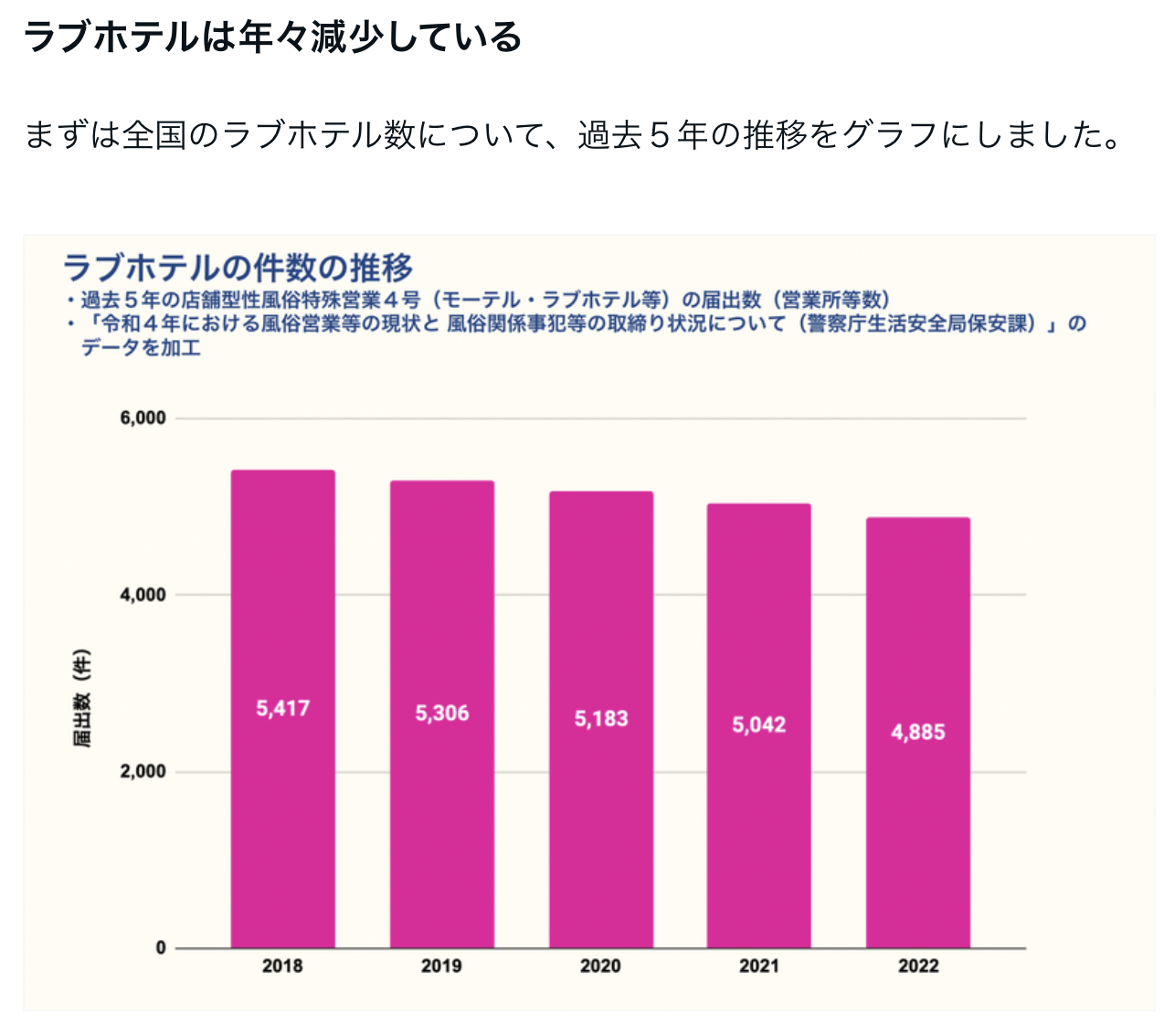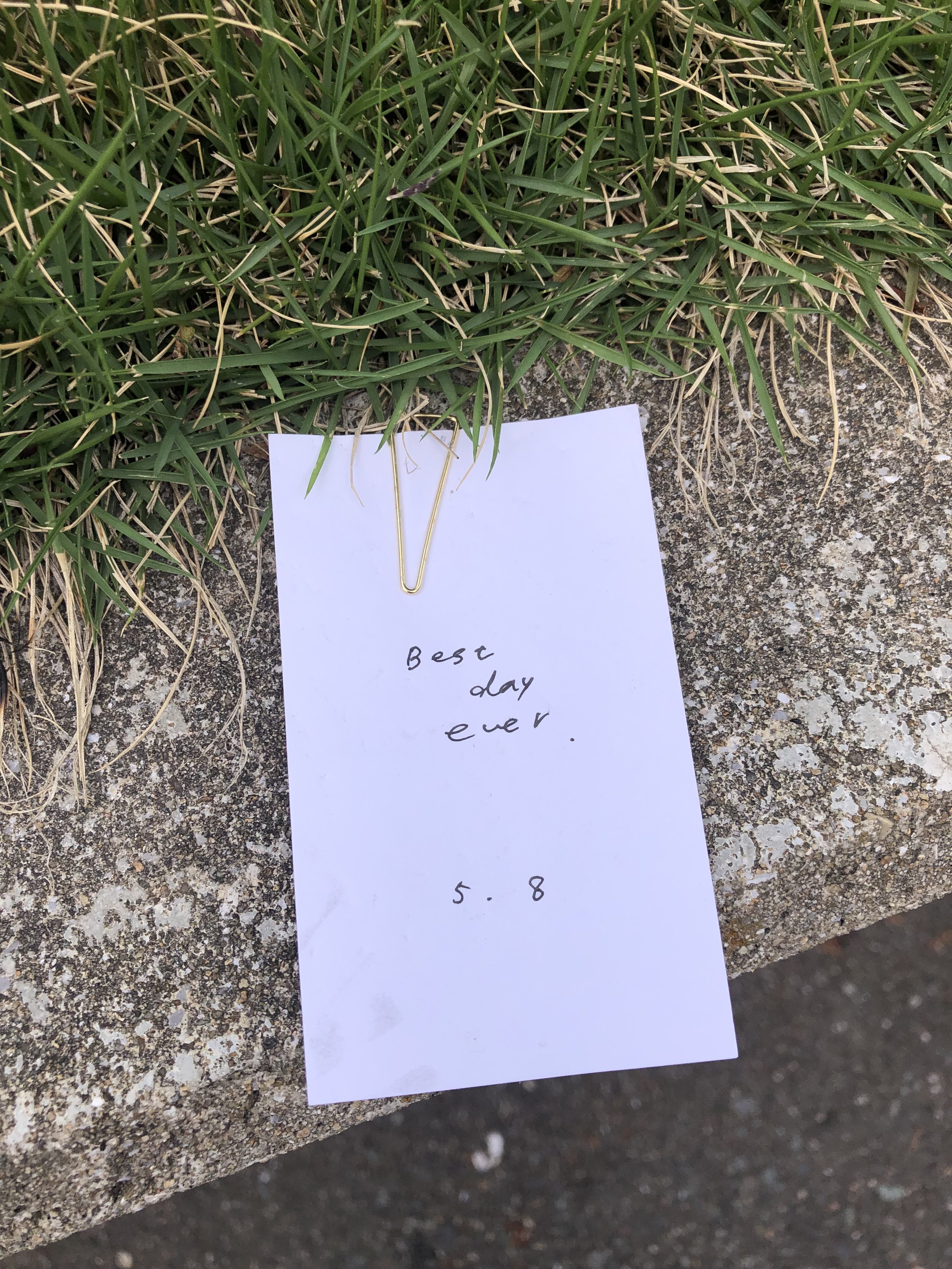Hard to believe that Fukuoka has a less than average number of love hotels. Shame on us.
The number of love hotels nationwide is (or was at the time of the original post) 5,670, or 5.39 hotels per 100,000 adults.
Miyazaki Prefecture has the highest number, with 14.08 per 100,000 adults (deviation value: 72.4). Second place was Saga Prefecture with 13.28 houses. From here on, to be known as “Saucy Saga”. Third place and below are Fukushima prefecture (12.50), Kumamoto (12.21), and Tottori (11.70). Begs the question what is going on in randy old Kyushu.
On the other hand, Hyogo Prefecture has the lowest number of hotels—only 0.84 per 100,000 adults (deviation value: 28.8). This is followed by Kanagawa (1.78), Aichi (2.70), Tokyo (2.73), and Saitama (3.35). Sad.
Incidentally, the very first rabuho I ever went to happened to be in Kumamoto. It was called DINKS, a term I hadn't heard of before. I asked my girlfriend what it was supposed to mean and she replied matter-of-factly, "Dual-Income, No Kids". The poor girl’s English wasn’t very good, but for some reason she knew that term. It just rolled off her tongue like she had said it a hundred times before.
(By the way, "DINKWAD" means "Double income, no kids, with a dog". A lot of my friends are DINKWADs.)
According the site note, the number of lover hotels has been gradually decreasing every year. In 2018, there were 5,417 establishments, but in 2022 the number had fallen to 4,885. It is estimated that around 100 love hotels go out of business every year. There seem to be a variety of factors contributing to this, including population declines in local cities, young people moving away from cars, and stricter regulations by local governments.
For more, go here.





